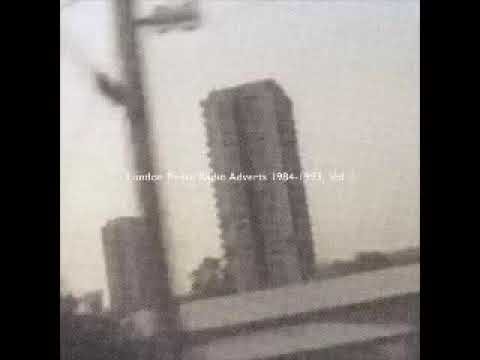Colin here. I’ve long admired the record store Boomkat in the UK. They focus on the interesting and overlooked, regardless of genre. I find their drone, ambient, and other electronic music selections to be on point. I’ve been mostly shopping them for beautifully produced physical releases as well as their excellent 14-track genre samplers. But I never thought I’d be seeking them out to listen to old radio advertising.
Why is this interesting?
Boomkat recently released a fascinating series of compilations called Death Is Not The End that are recordings of adverts that appeared on London pirate radio during various time periods. For those unfamiliar, pirate radio was the operation of unlicensed radio stations that were often hyper pure and non-commercialized expressions of underground sounds ranging from jungle to house, to two-step depending on the era.
As Boomkat describes the release:
Scanning the airwaves of a golden era in London history between 1984-1993 when dancehall soundsystem culture fostered the early stirrings and full rush of hardcore, Death Is Not The End turn their beady ear to one of the epicentres of UK rave music with stacks of raggo vignettes advertising everything from Greek salons to school reunions, video shops, datelines, drug helplines, and dances, each set to backdrops of contemporaneous club, rare groove, jungle and house.
As much as anything, the set speaks to London’s inimitable, cultural variegation, charting the myriad voices and flavours that make up the city’s stylistic mosaic, and would go on to deeply inform British pop and dance culture for decades to come. It’s as thrilling as Sublime Frequencies’ best radio surveys, but with an extra layer of familiarity for UK listeners, not just those who lived thru that era, but anyone who had the radio crackling as ambient wallpaper during that era…if you allow for some vicarious nostalgia, this tape documents a rich slice of the collective cultural memory that we’ve all come to share.
The power of releases like this is they are time capsules and hyper-specific shared cultural memories. I also love the idea that a small business, that might not have been able to market in other means, turned to the cost-effective, and underground stations in turn funding their illicit sonic output. The ads, ranging from what sounds like a Greek salon and a video store to proper raves, are the original native advertising as well, using the low-fi vernacular, accents, and slang that the DJs were also using. Even as a non-brit, it is incredibly interesting to hear a time of underground music through the ads that were played on pirate radio. (CJN)
—
Partner post: The Daily Upside
Former investment banker Patrick Trousdale writes The Daily Upside, a business newsletter that covers the most important stories in business. In his words, “The Daily Upside delivers quality insights and surfaces unique stories you won’t read elsewhere. It’s completely free and you are guaranteed to learn something new every day.”
It’s something that more finance-oriented WITI readers might dig, hence the plug. Go sign up here.
--
WITI x McKinsey:
An ongoing partnership where we highlight interesting McKinsey research, writing, and data.
Road freight accounts for 53 percent of CO2 emissions within global trade-related transport, and that share is expected to rise by 2050—unless current trends shift. A new report unpacks the issues with an overview of the road-freight market, barriers to progress, and ways to overcome obstacles on the path ahead.
—
Thanks for reading,
Noah (NRB) & Colin (CJN)
Why is this interesting? is a daily email from Noah Brier & Colin Nagy (and friends!) about interesting things. If you’ve enjoyed this edition, please consider forwarding it to a friend. If you’re reading it for the first time, consider subscribing (it’s free!).





Such a great find Colin. The inland Pirates of the 80's and 90's shaped the music of the kids in London in the same way that the offshore pirates did in the 60's. Mainstream radio stations in London grabbed the DJ's for their programs just like the 60's. And the beat goes on.